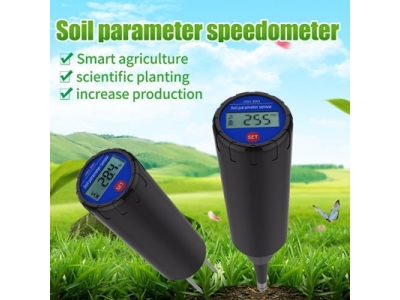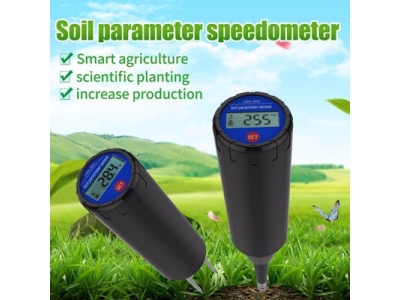Soil health is critical for sustainable agriculture and environmental management. Soil sensors are important tools that can provide valuable data and insights on soil moisture, temperature, and nutrient levels, among other parameters. With the rapid advancement of technology, soil sensors have become more affordable, portable, and accurate. In this article, we will explore the potential of soil sensors for improved land and water management.
Soil Moisture Monitoring
Soil moisture is a crucial factor in crop growth and yield. Soil sensors can accurately measure soil moisture levels, enabling farmers to make informed decisions about irrigation scheduling and water management. By using soil moisture information provided by sensors, farmers can optimize water usage, reduce runoff, and increase crop yields.

Moreover, soil sensors can help in drought monitoring and forecasting. By continuously monitoring soil moisture levels, sensors can provide early warnings of drought conditions, assisting in drought preparedness and mitigation efforts.
Soil Nutrient Monitoring
Soil nutrients are essential for plant growth and development. Soil sensors can measure various soil properties related to nutrient availability such as pH, nitrogen, phosphorus, and potassium levels. This information can be used to optimize fertilizer applications and prevent overuse of nutrients, minimizing environmental impacts and reducing costs for farmers.
In addition, soil sensors can detect nutrient deficiencies or imbalances, helping farmers adjust their fertilization practices to improve crop yields and quality. Moreover, soil sensors can aid in soil remediation efforts, providing data on the effectiveness of soil amendments or other soil treatments.
Soil Temperature Monitoring
Soil temperature affects plant growth and development, seed germination, and pest activity. Soil sensors can measure soil temperature accurately, providing information for optimal planting and harvesting schedules. For example, soil temperature sensors can help farmers determine the best timing for planting crops such as corn or soybeans, which require specific soil temperatures for optimal germination.
Soil temperature sensors can also assist in pest management by providing information on soil temperature changes that could affect the behavior and life cycle of pests, such as insect pests or nematodes. This information can help farmers implement pest control strategies effectively while minimizing the environmental impact.
Soil Erosion Monitoring
Soil erosion is a significant problem in many areas around the world. Soil sensors can provide valuable information on soil moisture levels and infiltration rates, which are critical factors in determining soil erosion risks. By continuously monitoring soil erosion factors, farmers and land managers can implement best management practices to reduce soil erosion, such as crop rotation, cover cropping, and reduced tillage.
Moreover, soil sensors can assist in evaluating the effectiveness of soil conservation measures. By comparing data collected before and after soil conservation practices are implemented, soil sensors can measure improvements in soil health and assess the economic and environmental impacts of these practices.
Water Quality Monitoring
Soil sensors not only provide information on soil parameters but also on water quality. Soil sensors can measure the levels of nutrients, pesticides, and other pollutants in soil water, allowing for early detection of water quality issues. This information can aid in assessing the effectiveness of agricultural practices in reducing runoff, minimizing the environmental impact of nutrient leaching, and preventing harmful algal blooms.
Furthermore, soil sensors can assist in water resource management, particularly in areas with limited water resources. By monitoring soil moisture and water quality information, farmers and land managers can optimize irrigation scheduling and reduce water usage, minimizing the impact on limited water resources.
Conclusion
Soil sensors have the potential to revolutionize modern agriculture and environmental management by providing accurate and real-time data on soil and water parameters. With the increasing adoption of precision agriculture and sustainable land management practices, soil sensors are becoming more essential tools for farmers and land managers. Soil sensors can aid in optimizing water and nutrient usage, improving crop yields and quality, reducing soil erosion, and minimizing the environmental impact of agricultural practices. As technology continues to advance, soil sensors will play an increasingly vital role in sustainable land and water management.






